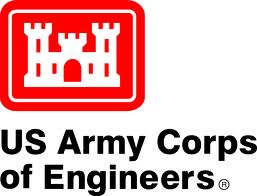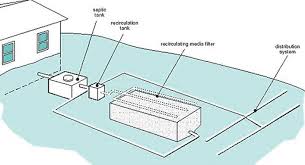Prospective pond owners should check with local, federal,and state agencies for regulations on pond site selection. These agencies may have a say in where you can construct a pond, yes even on your own privately owned property. The ratio of permits needed here in Michigan when we dig ponds is only 1 out of 5 ponds dug is in need of permits.
A joint state and federal permit process has been established between the DEQ and the U.S. Army Corps of Engineers (USACE) for proposed projects in areas which have both state and federal jurisdiction. The Water Resources Division will determine whether a permit application requires joint state and federal review, and when appropriate, will forward these permit applications to the USACE Detroit office for federal permitting review.

federal regulations
A permit from the United States Arm Corps of engineers (USACE) is needed if any of the following is done in there regulated areas,
-
Deposit or permit the placing of fill material in a wetland.
-
Dredge, remove, or permit the removal of soil or minerals from a wetland.
-
Construct, operate, or maintain any use or development in a wetland.
-
Drain surface water from a wetland.
In accordance with Part 303, wetlands are regulated if they are any of the following:
-
Connected to one of the Great Lakes or Lake St. Clair.
-
Located within 1,000 feet of one of the Great Lakes or Lake St. Clair.
-
Connected to an inland lake, pond, river, or stream.
- Located within 500 feet of an inland lake, pond, river or stream.
-
Not connected to one of the Great Lakes or Lake St. Clair, or an inland lake, pond, stream, or river, but are more than 5 acres in size.
-
Not connected to one of the Great Lakes or Lake St. Clair, or an inland lake, pond, stream, or river, and less than 5 acres in size, but the DEQ has determined that these wetlands are essential to the preservation of the state's natural resources and has notified the property owner.
There are some exclusions from these guidelines for agricultural uses,
In general, the guidelines require that the activity be the least environmentally damaging alternative that is feasible, and that adverse impacts are avoided, then minimized, and then compensated for (such as creating or restoring wetlands to replace those that would be filled). Activities also must not be contrary to the public interest, as determined by the Corps.

State regulations
There are a number of reasons a permit is needed from the state of Michigan for pond construction. If there is ever a question weather a permit is needed I can come out and do a site inspection. We can also Save time and Money and Request a Pre-Application Meeting with state Permitting Staff.
Part 301, Inland Lakes and Streams
A permit is required for activities that occur within or over an inland lake or stream or below the Ordinary High Water Mark (OHWM) of an inland lake or stream. An inland lake or stream is a natural or artificial lake, pond or impoundments 5 acres or greater, or a river, stream or creek (including county drains) that have a definite bank, bed, and visible evidence of continued flow or occurrence of water.
Part 303, Wetlands Protection
A permit is required for activities within wetlands. A wetland is a land characterized by the presence of water at a frequency and duration sufficient to support-and that under normal circumstances does support-wetland vegetation or aquatic life, and is commonly referred to as a bog, swamp, or marsh. Typically a regulated wetland in Michigan is one contiguous to the Great Lakes or inland lake or stream; or an area of 5 acres or more in size. See Chapter 3 for additional information about Part 303, Wetland Protection.
Part 31, Water Resources Protection (Floodplain Regulatory Authority)
A permit is required for activities within the 100-year floodplain and floodway of a river, stream, drain, or inland lake. The regulation also applies to a watershed that has a drainage area of 2 square miles or greater, when measured at the downstream limits of a proposed project. See Chapter 3 for additional information about Part 31, Flood Hazard Management, and National Flood Insurance Program.
Part 323, Shorelands Protection and Management
Designated Environmental Areas
- A permit is required for any activities within a designated environmental area. An environmental area is an area of the shoreland determined to be necessary, by the MDEQ, for the preservation and maintenance of fish and wildlife. A list of counties that have environmental areas is located in Appendix D or to determine if the project is located within an environmental area, contact the LWMD. See Chapter 3 for additional information on Environmental Areas.
In short if you have an area on your property where water is present during the year in sufficient amounts to support wetland vegetation, such as cat tails and water lilies, or aquatic life such as fish, frogs and turtles, then a permit may be needed.
There are certain ways to get around permits in some cases and different types of permits also, such as the the minor project catagory that is only $50 and does not have a public notice.
Local regulations
Some local regulations from your township may include
set backs from property lines, well heads, septic house and other structures
plans for spoils with approved site plan, some local regulations require that no spoils be hauled off site.
performance bonds, regulations may require a cash bond to make sure the pond is dug correct
safety, regulations may require life preserver or other devices next to ponds
exterior and anterior slope, most regulations require a minimal of 1 foot of depth to 3 foot of slope, or 1 to3
County regulations
Most counties in Michigan will require a soil erosion permit. this permit may require the use of silt fence, straw, seed, and other erosion control.
This permit process can be very discouraging and frustrating, give are staff here at Schlicht ponds a call and let us take care of all the paper work. All these permits can be obtained by the staff at pond perfection, for a reasonable fee.








